
Roots
The very strands that crown our heads hold stories—whispers from ancestors, echoes of resilience, and the rich, complex beauty of heritage. For those with textured hair, this connection is particularly profound. Our coils, curls, and waves carry the weight of history, each twist and turn a testament to ingenuity, cultural pride, and enduring spirit.
We often look to modern solutions for hair care challenges, seeking new serums and styling aids, yet what if the wisdom we truly seek lies not ahead, but behind us? This exploration asks if the ingenuity of ancient hair tools can truly elevate our contemporary textured hair regimens, not merely as quaint curiosities, but as vital connections to a legacy of profound hair care.
Consider the deep roots of textured hair, not merely as a biological structure, but as a living archive. From the protective spirals that shielded ancestral scalps from the sun’s intense gaze to the intricate patterns that conveyed social standing, religious belief, and even coded messages of freedom, hair has always been more than simple adornment. The history of afro-textured hair, characterized by its tightly coiled strands and curved follicle, was integral to identity, status, and societal roles in ancient African kingdoms. Understanding this foundational relationship is essential as we consider the tangible objects—the tools—that facilitated these practices across millennia.
Textured hair, with its unique biological blueprint, has always been a profound canvas for identity and communication across the African diaspora.

Hair Anatomy and Its Ancestral Context
To appreciate how ancient tools might serve us today, we must first truly understand textured hair itself. Human hair, primarily composed of keratin, grows from follicles embedded in the dermis. The distinctive curl of textured hair stems from the elliptical or oval shape of its follicle; the flatter the oval, the tighter the curl. This intrinsic structure, while beautiful, also means textured hair can be more prone to dryness due to the difficulty of natural scalp oils traveling down the coiled shaft, and more susceptible to breakage if not handled with care.
From an ancestral perspective, this anatomy was not a flaw but a feature, an adaptation honed over generations. Evolutionary biologists suggest that afro-textured hair provided natural protection against intense ultraviolet radiation and allowed air circulation to cool the scalp in hot climates. Our ancestors instinctively developed care rituals that honored this unique biology, relying on local botanical wealth and communal practices. The very design of ancient tools, whether for cleansing, detangling, or styling, reflected an intuitive understanding of these hair characteristics, passed down through observation and lived experience.
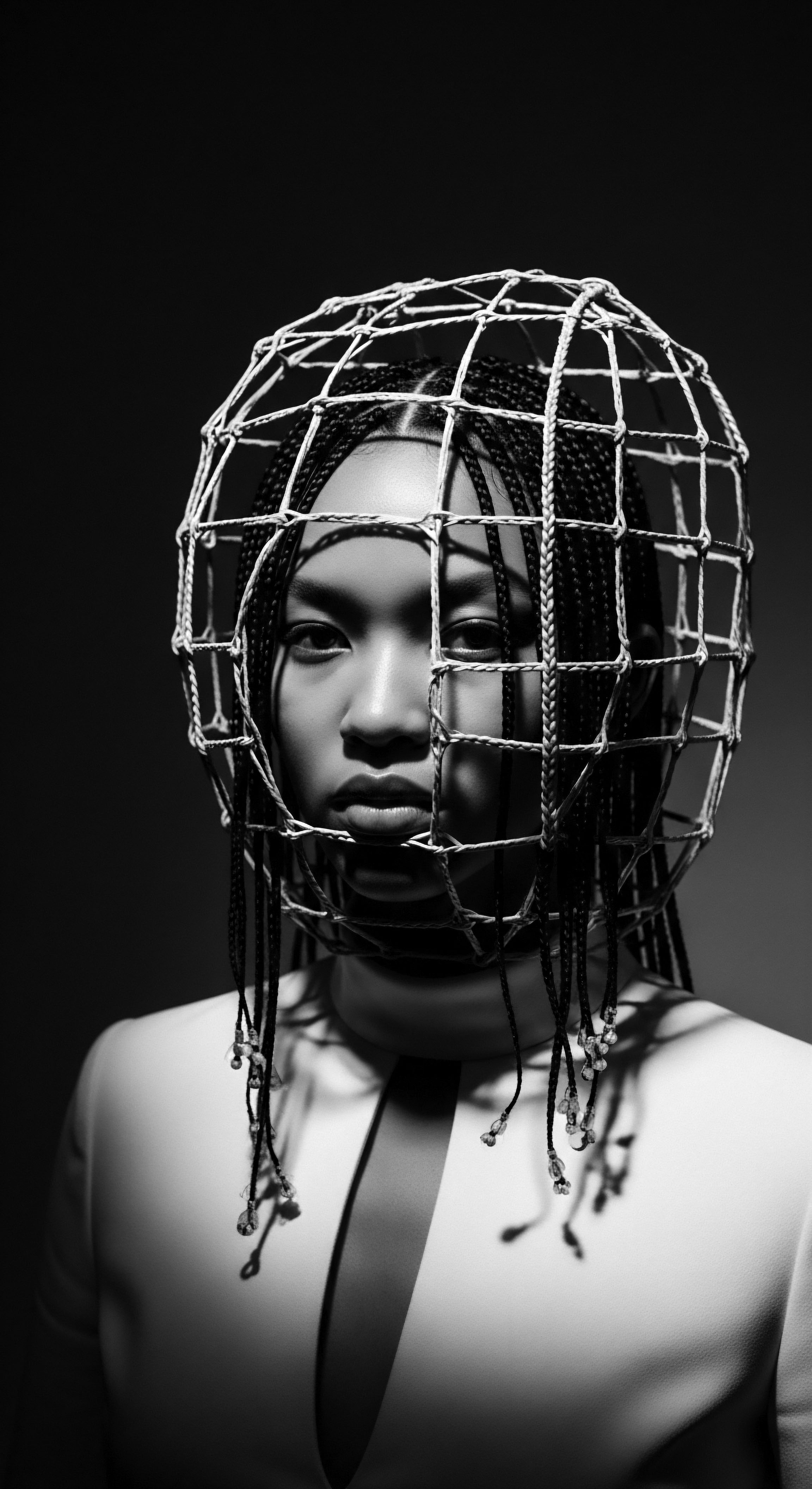
Textured Hair Classification Systems and Their Cultural Threads
Modern classification systems, like the Andre Walker system, categorize hair into types based on curl pattern, density, and volume. While these offer a contemporary framework, it is vital to acknowledge their relatively recent origin and often Western-centric lens. Historically, hair classification was deeply embedded in cultural context, far beyond a simple curl chart. Hairstyles distinguished one’s status based on geographic origin, marital status, age, ethnic identity, religion, wealth, and rank in society within pre-colonial Africa.
- Tribe ❉ Hair patterns often identified a person’s community or lineage.
- Status ❉ Elaborate styles could signify royalty, age, or marital status.
- Belief ❉ Certain styles were linked to spiritual practices or protection.
The tools used to create these markers were not generic implements; they were often culturally specific, sometimes symbolic themselves. A comb was not merely a comb; it might be carved with symbols representing patience or feminine virtue, as seen with the Asante people’s “Duafe” comb. This deeper cultural understanding of hair classification transcends the mere physical, grounding our discussion of tools within a living heritage.

The Essential Lexicon of Textured Hair ❉ A Heritage of Words
Language shapes understanding, and the lexicon surrounding textured hair has its own powerful history. Terms like “nappy,” once used disparagingly, have been reclaimed as symbols of pride and self-acceptance within the Black community. The words we use for styles—Braids, Cornrows, Bantu Knots, Locs, Twists—carry historical weight. Braids, for example, trace back over 5,500 years in African culture, serving as communication mediums and symbols of identity long before they became global trends.
This historical vocabulary underscores a fundamental truth ❉ the practices we engage in today are not new inventions. They are continuations, adaptations, and often, reclamations of ancient techniques. When we speak of “protective styles,” we are speaking a language understood by generations, rooted in ancestral knowledge of hair protection and growth. The tools of our ancestors shaped both the physical hair and the language used to describe its journey.

Hair Growth Cycles and Influencing Factors
Hair grows in cycles ❉ anagen (growth), catagen (transition), and telogen (resting). Afro-textured hair has been found to have the slowest growth rate, with more fibers in the telogen phase. This biological reality means that retention of length, rather than simply rapid growth, becomes a critical aspect of textured hair care. Ancient practices often centered around minimizing manipulation and environmental exposure, inherently supporting length retention.
Environmental and nutritional factors played a considerable part in ancestral hair health. Communities relied on their local ecosystems for ingredients, developing specialized oils, butters, and clays that acted as protective and nourishing agents. Shea butter, for example, extracted from the nuts of the African shea tree, has been used for centuries to soften and moisturize hair, especially curly and coarse types. These traditional emollients often formed the very basis of ancient hair care, demonstrating a practical application of botanical knowledge long before the advent of modern chemistry.
The understanding of these cycles, though perhaps not formally articulated in scientific terms, was inherent in the consistent, mindful practices. The communal aspect of hair care meant that successful methods were shared, refined, and passed down, creating a collective wisdom that served as a powerful guide. This ancestral wisdom, informed by observation and experience, directly influences the effectiveness of traditional tools.
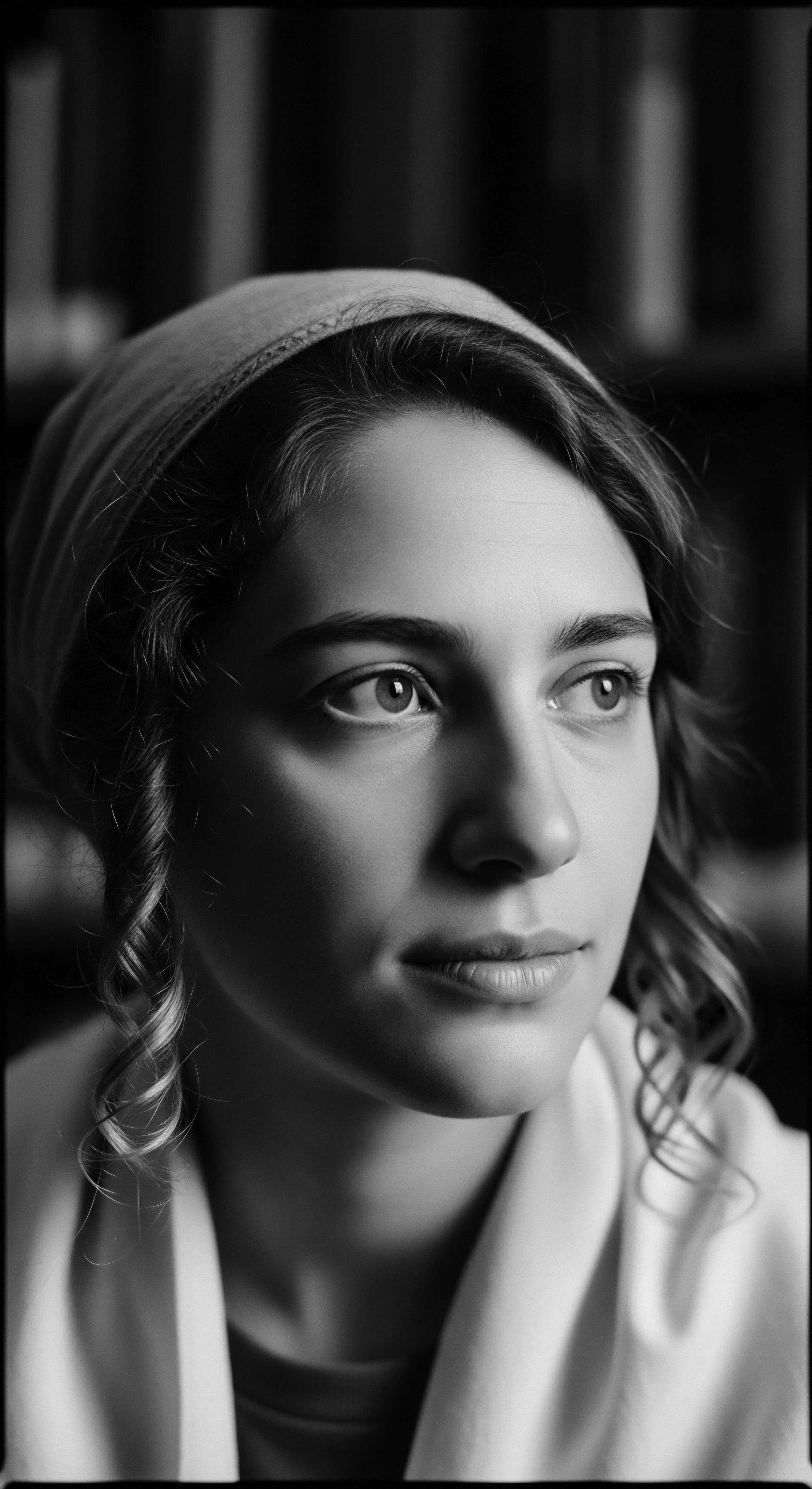
Ritual
The care of textured hair has always been more than a chore; it is a ritual, a connection to self, community, and the stories embedded within each strand. From the communal braiding sessions under ancient African skies to the quiet moments of nighttime protection today, these practices carry a profound heritage. The question arises ❉ can the tools from these ancestral rituals offer a deeper, more resonant path to contemporary hair health and styling?
The history of textured hair styling is a vibrant chronicle of creativity and resilience. It speaks to how individuals and communities have shaped their crowns to express identity, celebrate beauty, and protect their precious strands. Many of the techniques and tools we consider “modern” for textured hair have deep, often untold, histories in ancestral practices.
Ancient hair tools provided the foundational means for intricate styling, weaving deep cultural significance into every design.
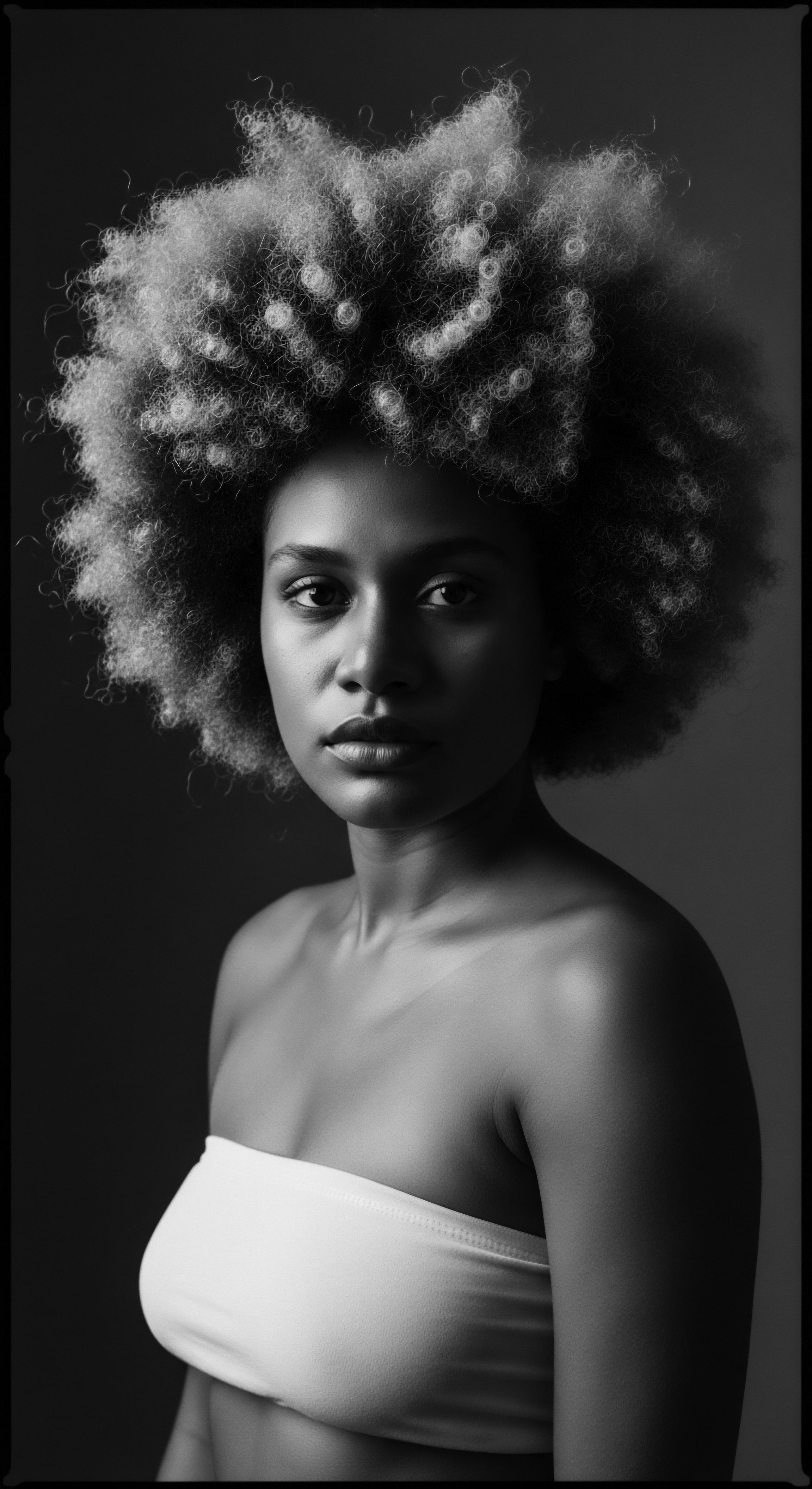
Protective Styling Beyond Aesthetics
Protective styles, a cornerstone of contemporary textured hair care, have ancestral roots stretching back thousands of years. These styles—braids, twists, cornrows, Bantu knots—were not solely for aesthetic appeal; they served the practical purpose of minimizing manipulation, reducing breakage, and safeguarding hair from environmental damage. Consider the cornrow , with archaeological evidence dating its origins to 3500 BCE in the Sahara desert.
Beyond their beauty, during the Transatlantic slave trade, enslaved Africans ingeniously encoded escape routes and hid small tools or seeds within cornrow patterns, transforming hair into a technology of survival and liberation. This powerful historical example speaks volumes about the practical and symbolic utility of protective styling.
Ancient tools were fundamental to creating these styles. Simple bone or wooden needles, finely crafted combs, and various natural fibers were the artisans’ instruments. These tools allowed for the precise parting, sectioning, and interlacing required for durable protective styles. The efficacy of a modern stylist’s hands, often aided by specific combs and clips, mirrors the skilled movements of ancestral hair artists.

Natural Styling Techniques
The pursuit of definition for natural curls is a common contemporary goal, often involving gels, creams, and complex techniques. Yet, traditional methods also prioritized definition, albeit with different resources and tools. For example, some African tribes used specific types of clay or mixtures of natural substances to sculpt and hold hair in place.
The Himba tribe in Namibia, for instance, used a mixture of clay and cow fat to create a hair paste that offered protection from the sun and aided in detangling. While the ingredients might differ, the principle of using a malleable substance to enhance and protect hair’s natural form remains a consistent thread across time.
The tools for natural styling were often extensions of the body—fingers, simple combs, or sometimes objects found in nature adapted for specific purposes. The gentle detangling offered by a wide-toothed wooden comb today echoes the careful separation of strands with a handcrafted ancestral comb. The very act of finger-coiling, a popular contemporary definition technique, has direct parallels in ancient practices where hands were the primary styling instruments, often enhanced by natural oils or butters.

Wigs and Hair Extensions
The practice of wearing wigs and hair extensions is far from a modern invention. Ancient Egyptians, for example, were renowned for their elaborate wigs and extensions as early as 3400 BCE. These were crafted from human hair, often bought, and secured using beeswax and resin, or by threading with various materials. Wigs served multiple purposes ❉ as status symbols for the elite, as protection from the sun, and for hygiene.
The tools involved in their creation and maintenance included hairpins, combs, and specialized bronze tools for waving and trimming. This historical context reminds us that the desire for versatility, volume, or a change in appearance is deeply human and transcends eras. The skill required to create a realistic ancient wig with rudimentary tools speaks to a mastery that contemporary extension artists can appreciate.
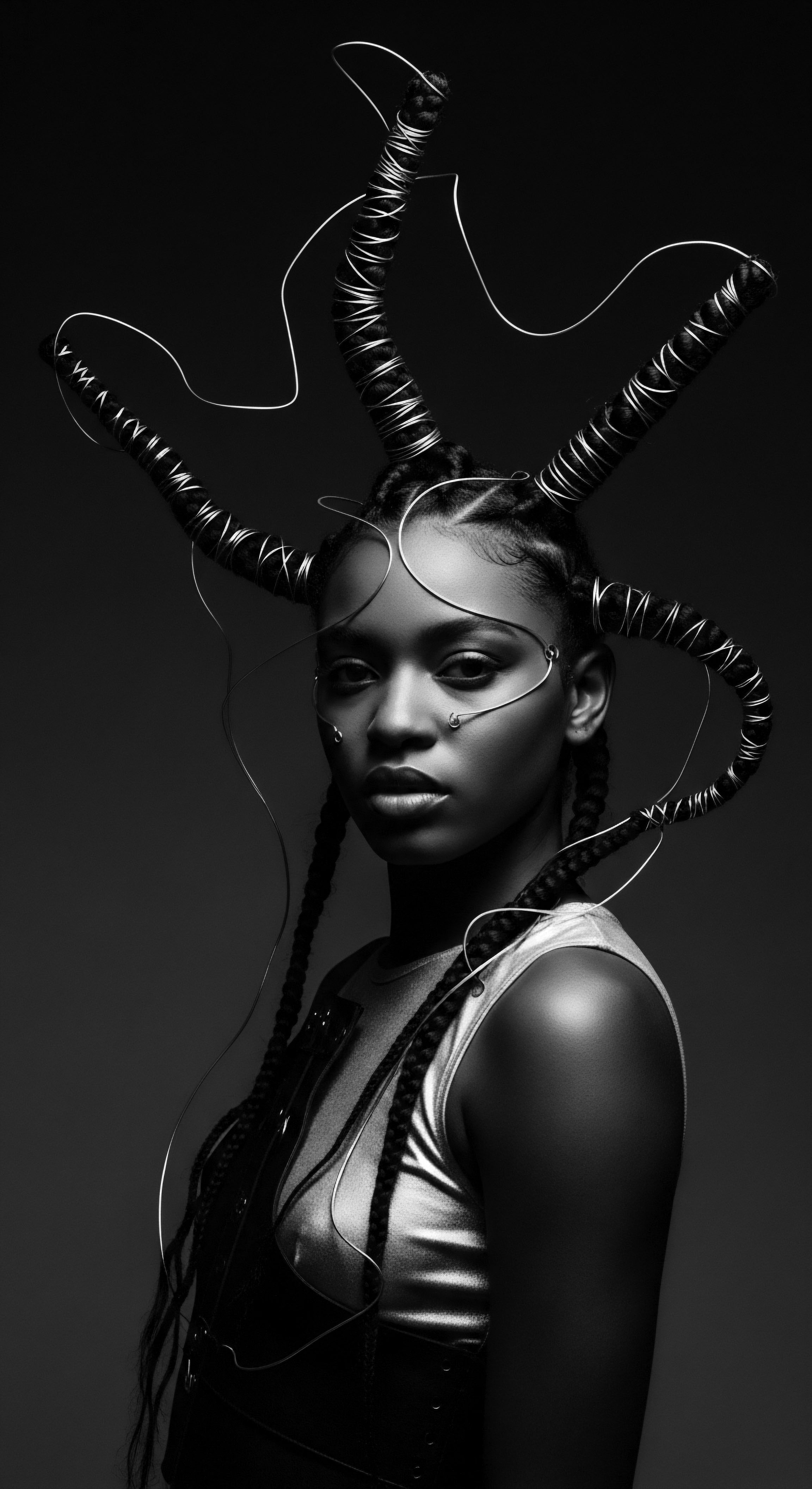
Heat Styling and Historical Methods
Modern heat styling, with its flat irons and curling wands, comes with a contemporary understanding of thermal damage. Historically, some cultures used methods to alter hair texture with heat, though often with different tools and principles. The “hot comb,” for instance, popularized in America, had roots in the desire to achieve straighter hair textures, initially heated over fire or stoves. While this practice aimed to assimilate into Eurocentric beauty standards, it represents an historical attempt to manipulate hair texture, often with consequences for hair health.
Contrast this with more benign, ancestral “heat” applications, such as warming oils before application to aid penetration, or using the warmth of the sun to dry hair gently after cleansing. The objective was often nourishment and protection, not drastic alteration. The careful application of warmth was integrated into rituals that preserved the hair’s integrity.

The Complete Textured Hair Toolkit ❉ An Ancestral Lens
Many “new” tools lauded in contemporary hair care have direct ancestral predecessors.
| Tool Category Detangling Combs |
| Ancestral Tool/Method (Historical Context) Ancient African combs (e.g. bone, wood, ivory, dating back 5,500 years in Egypt), often wide-toothed and symbolically carved. |
| Contemporary Parallel (Purpose/Heritage Link) Wide-toothed detangling combs and brushes (reducing breakage, preserving curl patterns); their fundamental purpose mirrors ancestral care. |
| Tool Category Styling & Shaping Aids |
| Ancestral Tool/Method (Historical Context) Fingers and natural materials (e.g. plant fibers, sinew for extensions/braiding), often combined with natural butters or clays for hold. |
| Contemporary Parallel (Purpose/Heritage Link) Styling gels, creams, and defining brushes (to sculpt and set curls); the quest for definition and hold persists across eras. |
| Tool Category Scalp Stimulation/Application |
| Ancestral Tool/Method (Historical Context) Massaging tools (simple stones, carved wood for applying oils) for stimulating scalp circulation and distributing treatments. |
| Contemporary Parallel (Purpose/Heritage Link) Scalp massagers, applicators (improving blood flow, ensuring even product distribution for growth and health). |
| Tool Category Protective Coverings |
| Ancestral Tool/Method (Historical Context) Headwraps (dukus, doeks in Ghana, Namibia, used for cultural identification, status, and practical protection from elements/lice). |
| Contemporary Parallel (Purpose/Heritage Link) Silk/satin bonnets and scarves (preserving moisture, preventing tangles, reducing frizz overnight); a direct lineage of protection. |
| Tool Category Drying Methods |
| Ancestral Tool/Method (Historical Context) Sun and air drying (gentle, natural approach to moisture evaporation). |
| Contemporary Parallel (Purpose/Heritage Link) Microfiber towels and air drying (minimizing friction, preserving natural hair structure post-wash). |
| Tool Category The enduring utility of ancestral tools speaks to a timeless understanding of textured hair's needs, offering a heritage-rich foundation for modern regimens. |
The “afro comb” or “afro pick” stands as a significant symbol. While popularized during the Civil Rights movement, its origins trace back to ancient Egypt, 5,500 years ago, demonstrating its deep historical lineage as a tool specifically designed for textured hair. These tools, crafted from wood, bone, or ivory, were not just functional; they held symbolic weight, marking status, group affiliation, and religious beliefs.
The Ashanti people of Ghana, for instance, carved specific Adinkra symbols onto their combs, linking verbal and visual messages and associating the “Duafe” comb with femininity, patience, and care. This deep cultural meaning imbues the simple act of combing with a profound connection to heritage.
Revisiting these tools means more than simply using a wooden comb; it involves understanding the reverence and intention with which they were originally crafted and employed. Integrating them into contemporary routines becomes an act of honoring ancestral wisdom.

Relay
The journey of textured hair care, from the elemental practices of antiquity to the complex routines of today, represents a relay of wisdom across generations. Can ancient hair tools truly inform a holistic care regimen, not just as nostalgic gestures, but as practical, scientifically resonant components rooted in a deep understanding of ancestral wisdom? The answer lies in appreciating the interplay between historical ingenuity and contemporary knowledge, recognizing that our past holds keys to optimizing our present.
Contemporary hair challenges for textured hair—dryness, breakage, length retention—are often addressed through an array of specialized products and techniques. Yet, many of these “modern” solutions echo ancestral practices, demonstrating a continuity of care principles. The genius of ancient tools and regimens often lay in their simplicity and their profound connection to natural resources, a philosophy that resonates deeply with a holistic approach to wellbeing.
Ancestral care practices, often utilizing natural tools and ingredients, provide a potent framework for holistic textured hair regimens today.

Building Personalized Textured Hair Regimens ❉ Ancestral Echoes
Crafting an effective textured hair regimen today often involves trial and error, a careful selection of cleansers, conditioners, and stylers tailored to individual needs. Ancestral communities, lacking commercial products, developed personalized regimens based on localized botanical resources and collective experience. For example, indigenous peoples across the Americas used yucca root as a natural shampoo, creating a soapy lather that cleansed and nourished.
In various African tribes, specific oils and butters were prepared for different hair needs, passed down through families. This bespoke approach, rooted in observation and adaptation, is a powerful lesson for contemporary care.
How do these historical approaches translate? They suggest a mindful simplicity. Focusing on cleansing with gentle, natural agents like rhassoul clay (used traditionally in Morocco to purify hair without stripping oils), followed by deep conditioning with raw butters like shea or cocoa, offers a historical pathway to hair health. The tools used for application—simple bowls, pestles for grinding, and hands—emphasized a direct, unmediated connection to the ingredients, contrasting with our often-distanced relationship with industrially produced items.

The Nighttime Sanctuary ❉ Bonnet Wisdom and Its Historical Basis
One of the most profound and universally recognized protective practices for textured hair today is the use of a satin or silk bonnet for sleep. This seemingly simple accessory has a rich and complex heritage. While European women in the mid-1800s used “sleep caps” for warmth, headwraps have been traditional attire in African regions for centuries, signifying wealth, ethnicity, marital status, and emotional state.
The history of head coverings for Black women, particularly after the transatlantic slave trade, carries a heavy weight. During enslavement, headwraps and bonnets were weaponized, used to visibly distinguish and demean Black women. Yet, through resilience, these coverings were transformed into symbols of cultural expression and even clandestine communication; in parts of Central America, enslaved Black women used the folds in their headscarves to convey coded messages to one another that enslavers could not comprehend. Post-slavery, these coverings continued to preserve hair, but also asserted identity and self-sovereignty.
The science behind bonnets is straightforward ❉ silk and satin create less friction than cotton, preventing tangles, frizz, and moisture loss during sleep. This modern scientific understanding simply validates what generations of Black women intuitively knew about preserving their hairstyles and hair integrity. The tool, in this context, is not merely fabric; it is a repository of history, an enduring symbol of care, protection, and defiance.

Ingredient Deep Dives for Textured Hair Needs ❉ Ancestral Pharmacy
Many contemporary “hero ingredients” for textured hair have long been staples in traditional African and indigenous hair care.
- Shea Butter ❉ Extracted from the nuts of the African shea tree, this butter has been a cornerstone of hair and skin care across West Africa for centuries, prized for its moisturizing and protective qualities. Its fatty acid composition mimics the natural lipids in hair, providing deep conditioning.
- Coconut Oil ❉ Used across various indigenous cultures, including Latin America, for its ability to penetrate the hair shaft and reduce protein loss, strengthening strands from within.
- African Black Soap ❉ A traditional cleanser from West Africa made from plantain skins, cocoa pods, and palm leaves, it offers gentle cleansing without stripping natural oils, packed with antioxidants and minerals.
- Marula Oil ❉ A traditional oil from Southern Africa, known for its hydrating properties and antioxidant content, beneficial for both skin and hair.
- Rooibos Tea ❉ Originating in South Africa, this tea has antimicrobial and antioxidant properties, often used in rinses to promote healthy hair growth.
These are not novel discoveries; they are ancestral remedies, validated by generations of successful practice. Contemporary science now works to isolate compounds and understand mechanisms, but the original knowledge sprang from keen observation and deep connection to the natural world. Ancient tools, like simple grinding stones or vessels for mixing, were integral to preparing these raw ingredients for application.

Textured Hair Problem Solving ❉ Bridging Eras
Many common textured hair problems, such as dryness and breakage, are challenges that ancestral communities also navigated. While modern solutions often involve specialized treatments and products, ancient approaches relied on consistency, protective styling, and natural emollients. Traction alopecia, a condition resulting from prolonged tension on hair follicles, is a contemporary concern linked to certain styling practices. While ancestral styling methods were often intricate, they typically prioritized hair health and scalp integrity through mindful tension and natural support systems.
The resilience of textured hair, often subjected to harsh conditions during periods of enslavement and beyond, is a testament to the effectiveness of these ancestral protective strategies. The “nappy” texture of African American hair, once a target of discrimination, became manageable through traditional braiding and twisting techniques when modern products were unavailable, or worse, harmful chemicals were imposed. The ability of ancient tools to effectively detangle and style, without relying on harsh chemicals or excessive heat, offers a blueprint for contemporary problem-solving that prioritizes hair integrity.

Holistic Influences on Hair Health ❉ Ancestral Wellness
Ancestral wisdom often views health holistically, recognizing the interconnectedness of body, spirit, and environment. Hair health was not isolated from overall wellbeing. Diet, stress, community support, and spiritual practices all contributed to a person’s vitality, reflected in their hair.
Traditional African societies believed hair held spiritual energy due to its proximity to the heavens. This belief often translated into reverence for hair, making its care a sacred act.
The tools themselves, often hand-carved with intention and care, were imbued with this holistic perspective. A comb used for daily grooming was not simply functional; it participated in a ritual of self-care and cultural affirmation. Incorporating ancient tools into contemporary regimens invites us to slow down, to engage with our hair with greater intention, and to reconnect with the historical lineage of care that underpins our strands. This approach transcends superficial trends, offering a deeply rooted path to wellness for textured hair.
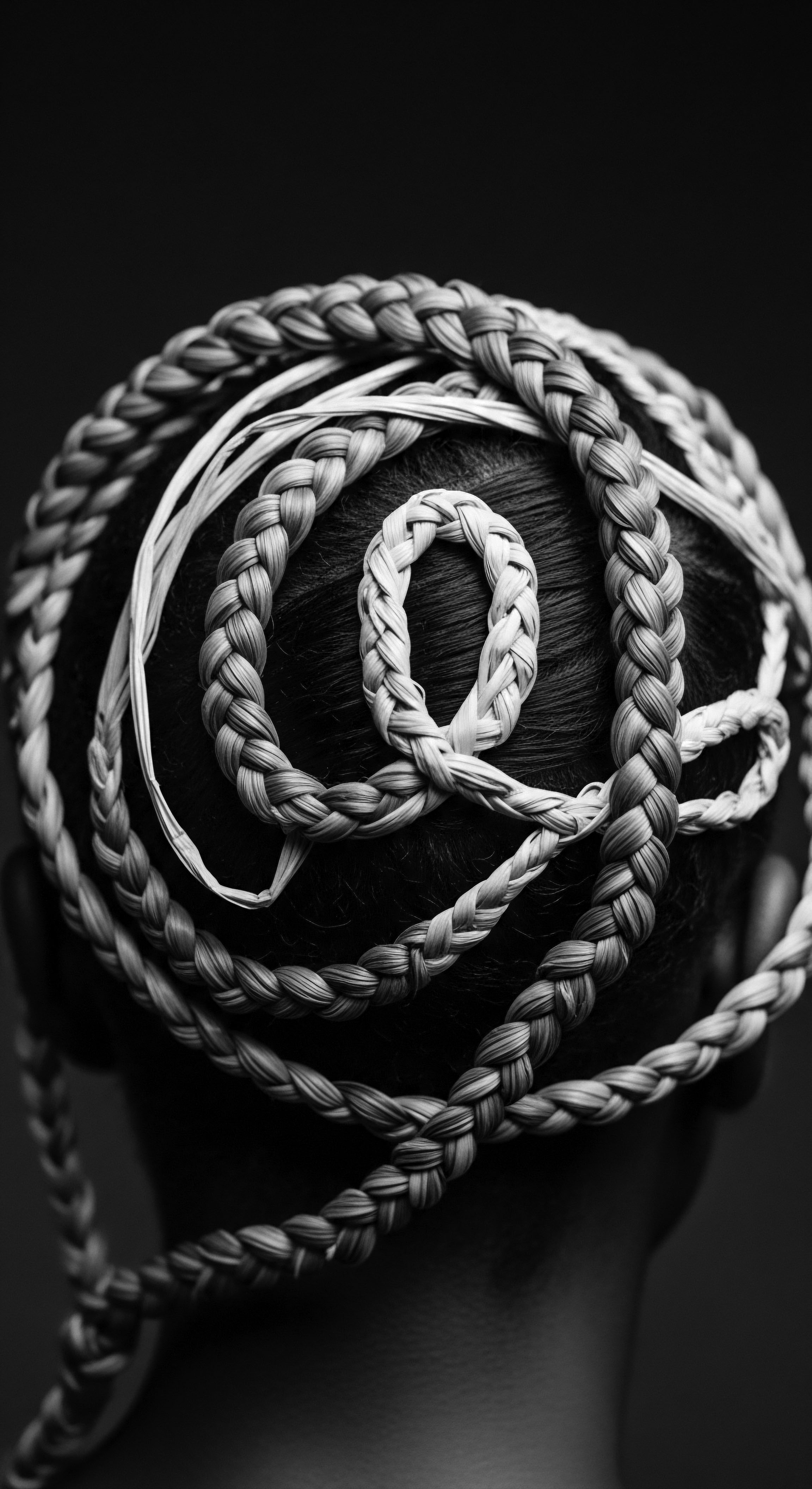
Reflection
Our journey through the historical landscape of textured hair care, guided by the silent wisdom of ancient tools, circles back to a central truth ❉ our hair is a living, breathing archive of heritage. The question of whether ancient hair tools can truly improve contemporary textured hair regimens finds its answer not in a simple ‘yes’ or ‘no,’ but in a deeper understanding of ‘how.’ It is a narrative of reclamation, a mindful return to foundational principles that honor the unique biology and profound cultural significance of textured hair.
The tools of our ancestors—the meticulously carved combs, the discerning hands that braided coded messages of freedom, the natural elements transformed into nourishing elixirs—were never mere objects. They were extensions of a collective wisdom, embodiments of care rituals passed down through generations. These implements, seemingly simple, were sophisticated in their design, reflecting an intuitive understanding of hair’s needs long before scientific laboratories could dissect keratin structures.
To invite ancient tools into our current regimens is to perform an act of lineage, to recognize that the pursuit of healthy, vibrant textured hair is not a new quest, but a continuation of a timeless practice. It encourages us to look beyond fleeting trends and chemical solutions, towards the sustainable, often simpler, yet profoundly effective methods that sustained our ancestors. This connection breathes life into our routines, transforming mundane moments of care into meaningful rituals.
It reminds us that our coils and curls are not problems to be solved, but legacies to be honored, stories to be told, and future narratives to be shaped with reverence and pride. The soul of a strand, indeed, holds the echoes of eternity.
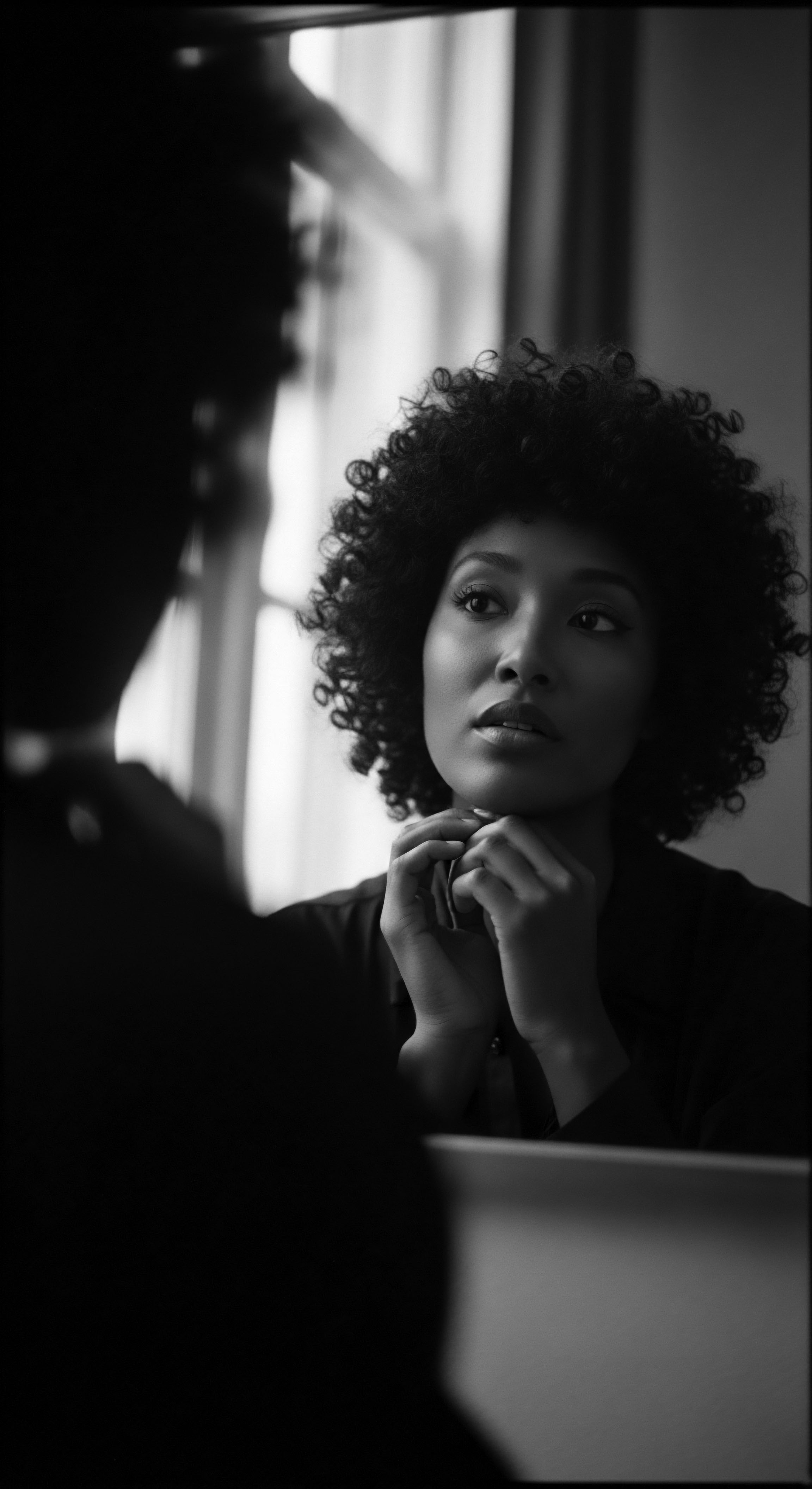
References
- Byrd, Ayana, and Lori Tharps. Hair Story ❉ Untangling the Roots of Black Hair in America. St. Martin’s Press, 2001.
- Chico, Beverly. Hats and Headwear Around the World ❉ A Cultural Encyclopedia. ABC-CLIO, 2013.
- Dear, Kate. “A historical journey of the structure, texture, and identity of afro-textured hair.” British Journal of Dermatology, 2024.
- Eglash, Ron. African Fractals ❉ Modern Computing and Indigenous Design. Rutgers University Press, 1999.
- Fletcher, Joann, and Francesco Salamone. “An Ancient Egyptian Wig ❉ Construction and Reconstruction.” Internet Archaeology 42, 2016.
- Miranda-Vilela, A.L. et al. “An overview of chemical straightening of human hair ❉ technical aspects, potential risks to hair fibre and health and legal issues.” International Journal of Cosmetic Science 36.1, 2013.
- Roberts, Valerie. The Hair Scare ❉ How African American Women Have Been Shaped by Their Hair. Hampton University Press, 2005.
- Sherrow, Victoria. Encyclopedia of Hair ❉ A Cultural History. Greenwood Press, 2000.
- Sieber, Roy, and Frank Herreman. Hair in African Art and Culture. Museum for African Art, 2000.
- Tarlo, Emma. Entanglement ❉ The Secret Lives of Hair. Oneworld, 2017.
